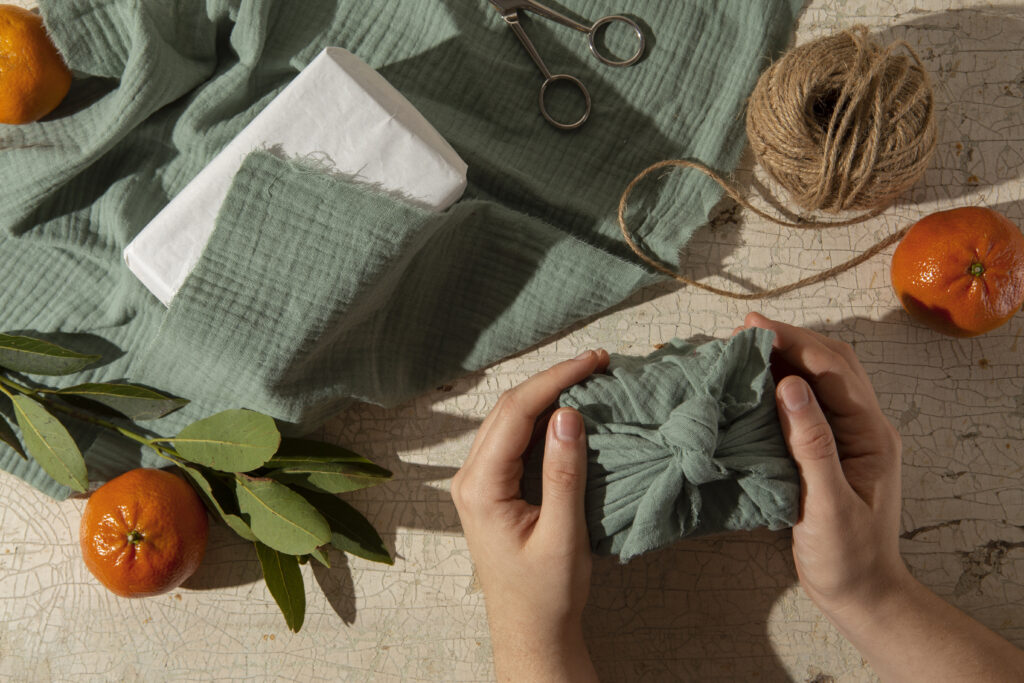Although fashion has always been innovative, it is also known to be harmful to the environment. Today, a growing number of apparel factories are signing up to rewrite this story as they deep dive into the on-demand driven zero-waste fashion movement, promoting sustainability and greater manufacturing responsibility. In this blog, we’ll explore how apparel factories are contributing to zero-waste fashion, what waste reduction strategies are in play, and how this shift is shaping the future of fashion.
Fashion brands and startups who wish to make a change must therefore be aware of these practices. Continue reading to discover how these factories are implementing zero-waste fashion, one step at a time.
Why Zero-Waste Fashion Matters Today

Have you ever wondered what happens to all the fabric scraps and unsold clothes in the fashion industry? The answer is awful: each year, we throw millions of tons of fabric away to landfills, pouring pollution into the air!!! To counteract waste, the zero-waste fashion movement was born in an effort to create no wasted or left-over scraps of materials at any point during production.
Zero-waste fashion is not just a trend for those invested in ethical and sustainable consumption; it’s an essential commitment to making the fashion industry greener, cleaner, and more conscious. Brands that back eco-conscious consumers support have brands build up more and to call a waste-free first place can also appeal increasing demand for factories in fashioned, you reduce fashion.
Key Strategies Apparel Factories Use to Achieve Zero-Waste Fashion
This post explores the apparel factories and what measures they are taking to be a part of zero-waste fashion. This is how they are changing lives:
- Efficient Pattern Cutting: A major contributor to waste in garment manufacturing is leftover fabric scraps retrieved from the relatively wasteful processes we use for conventional cutting. The system breaks the computerized base pattern into virtual markers for cutting and lays them out to be cut from fabric rolls. These factories are the inroads to zero-waste fashion by employing patterns that literally fit together with no leftover scraps.
- Recycling Fabric Scraps: When fabric scraps are unavoidable., it has become increasingly popular to recycle them. Now the factories are converting this residual material back into fabrics again, and it has become a new fashion where you can make bags and pouches with different colorful prints. Others even have partnerships with special companies to keep the scrap out of landfills by turning it into insulation material or industrial rags, which means that no piece goes wasted, and this indeed contributes to waste reduction in fashion.
- Utilizing Deadstock and Reclaimed Fabrics: Unsold fabrics (or deadstock) are a major source of waste. But today plenty of factories use deadstock to create new materials, preventing countless textiles from going straight into a landfill. By upcycling old fabrics, they are able to promote zero-waste fashion while providing brands with exclusive, never-seen-before materials.
- Custom-made Production: One of the biggest contributors to waste in traditional manufacturing is overstocked inventory. In response, many clothing manufacturers are transitioning to a made-to-order model. It leads to production based only on demand, less overproduction, and follows the zero waste fashion model. On-demand drastically lowers waste by guaranteeing at the very least each item is actually required before development commences.
- Biodegradable and Recyclable Materials: Zero-waste fashion: material used in the decision-making process. Frequently, factories will now use biodegradable or recyclable materials that save the product from also being less environmentally friendly on a disposable basis. As well as reducing waste in fashion, this shift among manufacturers to promote the recycling and reuse of products can support a circular economy.
How Zero-Waste Fashion Benefits Brands and Consumers

It’s good for the planet, but it also serves brands and their customers. Here’s how:
- Strengthened Brand Image: With consumers increasingly seeking sustainability practices, zero waste can be a competitive differentiator; it is one more way to position your brand as socially responsible and cutting edge.
- Lower Costs: By making the production process more efficient, using less material, and generating waste for disposal tends to be expensive—that way could drive down not only book costs but those of consumer-facing brands as well.
- Greater Customer Loyalty: Today’s consumers are buying from businesses that put an emphasis on going green. On the demand side, zero-waste fashion helps brands attract the growing yet eco-conscious buyer, who in turn is more likely to be a repeat customer.
How Maker’s Row Can Help Brands Embrace Zero-Waste Fashion
Brands looking to employ zero-waste fashion practices can find knowledgeable vendors through Maker’s Row. The platform lets brands connect with factories, large and small, around the world that are committed to reducing waste in fashion production on a sustainable level.
- Sustainable Factories: Find manufacturers on Maker’s Row working with sustainable practices for zero waste, from pattern cutting to fabric scraps. Brands could shop factories with a zero-waste pledge and cast in line strategically to collaborate on the values.
- Educational Resources: For sustainability fledglings, Maker’s Row shares blogs, webinars, and industry updates on zero-waste manufacturing practices and sustainable materials practices. These resources help brands make smart decisions.
- Seamless Partnership: Brands using Maker’s Row can seamlessly find factories that care about producing waste-free garments, which saves them valuable time and resources when they are on the hunt for manufacturing partners.
The design/manufacture web directory Maker’s Row can be a lifesaving partner for any fashion startup or brand looking to assemble a zero-waste for good supply chain. Brands can use this platform to demonstrate environmental responsibility and participate in responsible business at a wider scale.
Conclusion
What does the future hold for zero-waste fashion?
Apparel factories are the key drivers for adopting zero-waste practices as ethical fashion is becoming more mainstream. These factories have focused on why waste is created and are taking the obscure to revolutionary approach through patterns for efficient cutting, recycling, made-to-order programming, and sustainable materials. It also assists brands in creating a sturdy, long-lasting business.
Maker’s Row connects brands to partners who care about zero-waste fashion as much as they do. In doing so, it is sure to not only infiltrate the consciousness of more conscious consumers but also redefine an industry benchmark for responsibility and innovation in fashion.
Ready to make a difference? Launch your zero-waste fashion line with Maker’s Row today.
You Can Read More:
